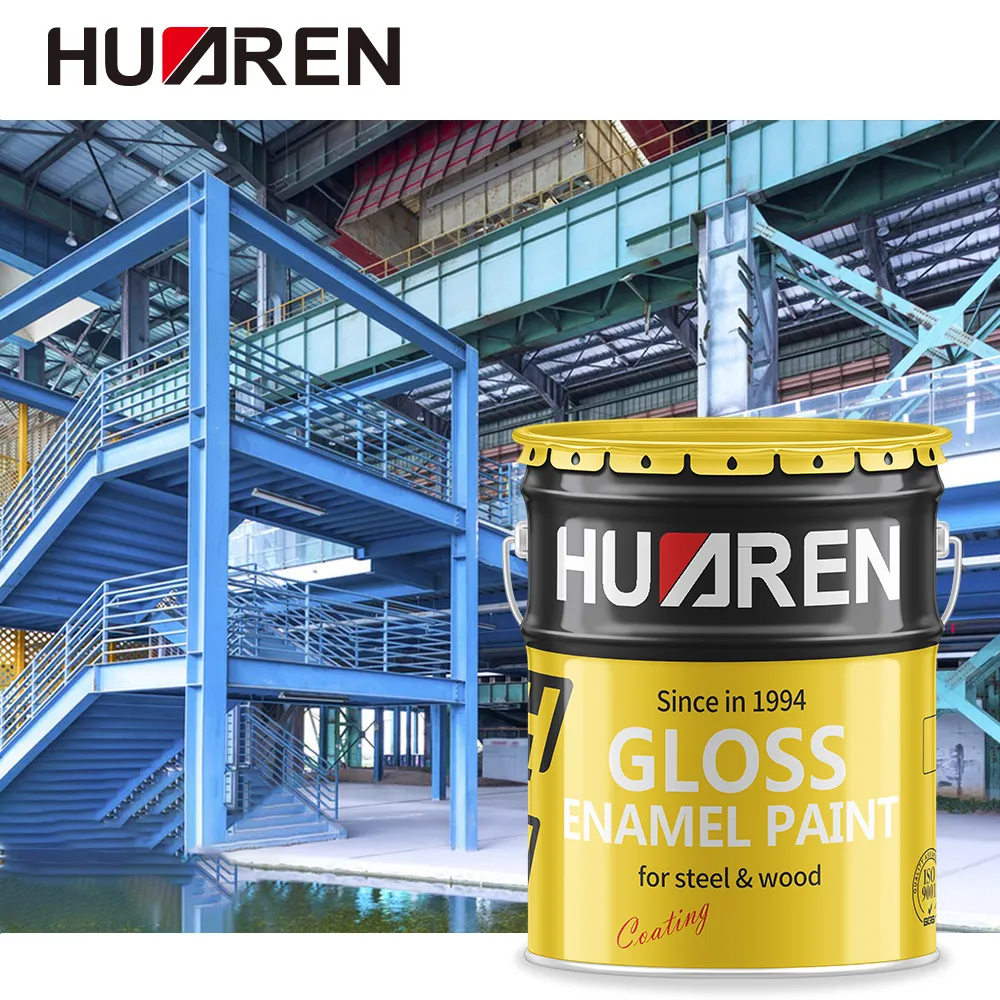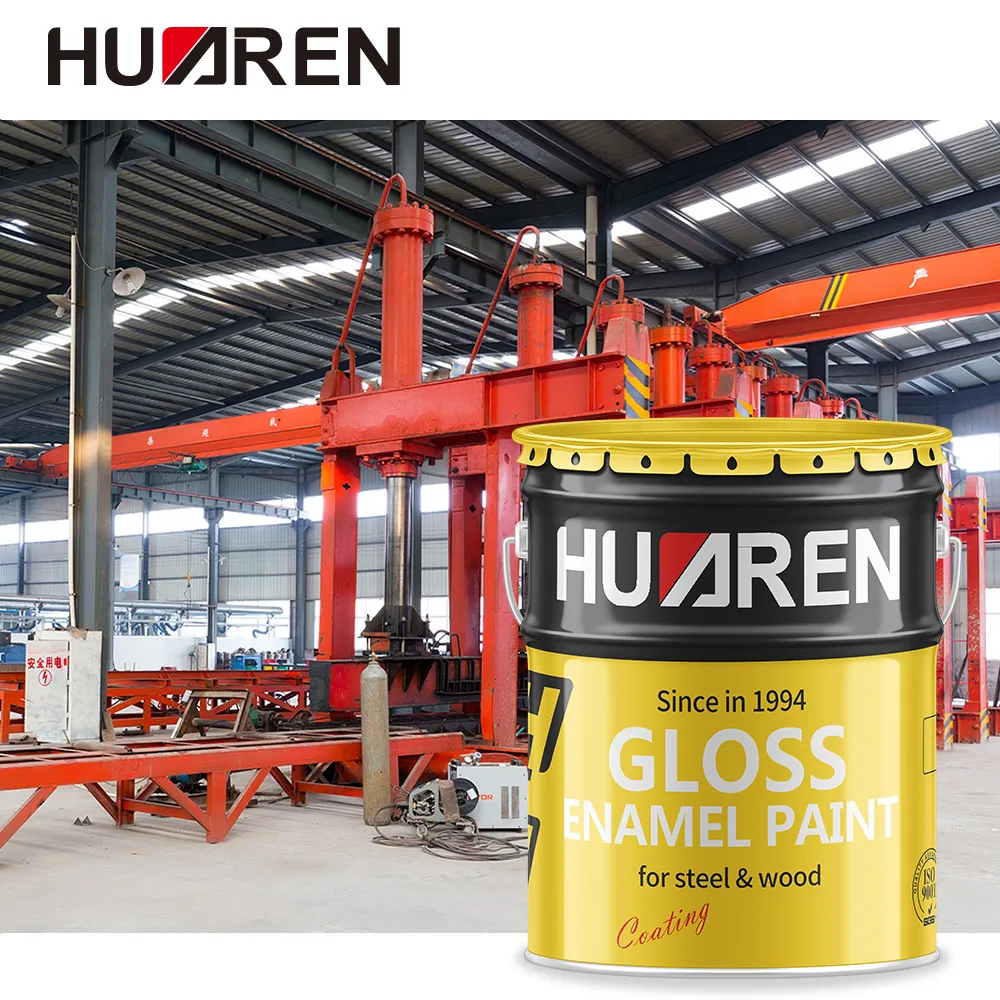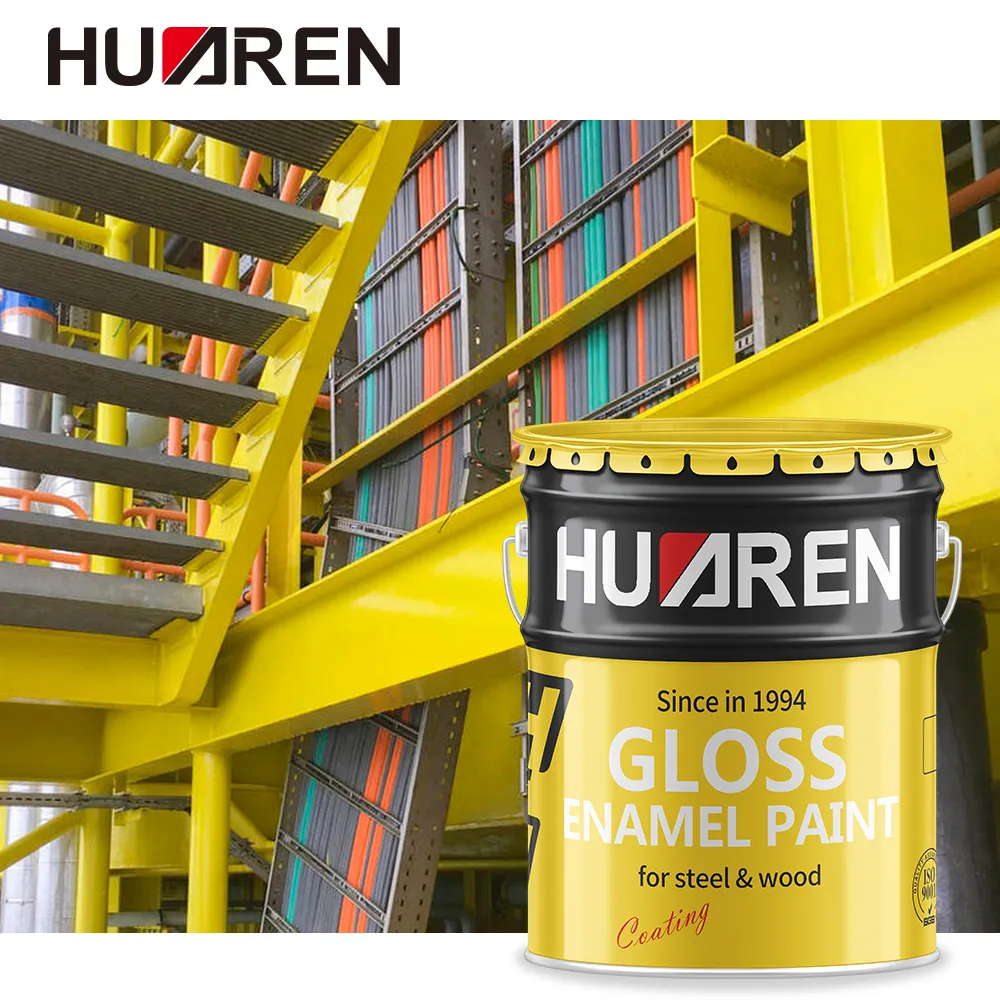Steel is widely used in construction, bridges, automobile manufacturing and other fields due to its strength and durability. However, when exposed to air and moisture, steel is prone to oxidation reaction, resulting in rust, which not only affects the appearance of the steel, but also weakens its structural strength. In order to prevent steel from rusting, choosing the right anti-rust paint becomes a key issue.
This article will discuss in detail which paint can effectively prevent steel from rusting, as well as the selection and application of anti-rust paint.

Why does steel rust?
The rusting process is actually a chemical reaction between steel (mainly iron) and oxygen and moisture to produce iron oxide, which is the common rust we see. This process is called oxidation reaction, which is both the result of chemical reaction and the product of the combined action of time and environment. In humid, salt spray or acidic environments, the corrosion rate of steel will be greatly accelerated.
To prevent this oxidation reaction, it is common to apply a layer of anti-rust paint. Anti-rust paint effectively delays or even prevents the occurrence of rust by forming a protective barrier on the surface of steel, isolating the steel from contact with air and moisture.
How does anti-rust paint work?
Rust-proof paints protect steel in three main ways:
1. Physical isolation: Rust-proof paints form an impermeable barrier on the surface of steel, preventing air and moisture from coming into direct contact with the steel, thereby preventing oxidation reactions from occurring.
2. Chemical protection: Some anti-rust paints contain special chemical ingredients, such as zinc powder or zinc salts, which can react with the surface of steel to form a dense protective layer, further enhancing resistance to corrosion.
3. Electrochemical protection: Some zinc-containing anti-rust paints can prevent steel corrosion through the sacrificial anode principle, that is, zinc has a lower potential than iron, and zinc is preferentially oxidized during the corrosion process, thereby protecting the steel from erosion.

What are the common types of anti-rust paints?
Common types of anti-rust paints are:
1. Zinc-rich primer
2. Epoxy primer
3. Iron oxide red primer
4. Polyurethane paint
In the selection of anti-rust paints, there are many types available on the market, and each paint has its specific anti-rust mechanism and applicable scenarios. The following is an introduction to these common anti-rust paints:
Zinc-rich primer
Zinc-rich primer is a primer with zinc powder as the main ingredient, which is widely used in the anti-rust treatment of steel. Since zinc has a lower potential than steel, zinc will corrode preferentially in the electrochemical reaction, thus providing cathodic protection for the steel. This primer is particularly suitable for use in harsh environments, such as highly corrosive places such as oceans and chemical plants.
Advantages of zinc-rich primer:
● Zinc-rich primer provides long-term anti-rust protection, especially in high humidity or salt spray environments.
● Zinc-rich primer has excellent electrochemical protection effect and can prevent oxidation of steel.
● Zinc-rich primer can be used as a primer and combined with other topcoats to provide additional beauty and protection.
Disadvantages of zinc-rich primer:
● Zinc-rich primer is relatively expensive and complicated to apply.
● Zinc-rich primer requires strict surface treatment to ensure the adhesion and protective effect of the coating.
Epoxy Primer
Epoxy primer is an epoxy resin-based anti-rust paint with excellent water resistance and chemical resistance. It is widely used in steel structures such as ships and bridges that need to be exposed to water or corrosive chemicals for a long time. Epoxy primer effectively blocks the entry of air and moisture by forming a dense coating, slowing down the rusting of steel.
Advantages of Epoxy Primer:
● Epoxy primer has excellent water resistance and chemical resistance, suitable for high humidity or corrosive environments.
● Epoxy primer has strong adhesion and can be firmly bonded to steel to provide long-term protection.
● Epoxy primer is easy to apply and can be used for large-area coating.
Disadvantages of Epoxy Primer:
● Epoxy primer will turn yellow under ultraviolet light, so it is not suitable for use as a separate topcoat.
● Epoxy primer needs to be used with topcoat to improve its weather resistance.
Iron Oxide Red Primer
Iron Oxide Red Primer is a long-standing anti-rust paint with iron oxide as the main anti-rust pigment, which can form a weather-resistant protective film on the surface of steel. Iron oxide red primer performs well under outdoor exposure conditions and is particularly suitable for rust protection of building steel structures.
Advantages of iron oxide red primer:
● Iron oxide red primer is relatively cheap and suitable for the protection of large-area steel structures.
● Iron oxide red primer performs well in sunlight and outdoor environments and has good weather resistance.
● The iron oxide red primer coating is strong and has certain mechanical strength and wear resistance.
Disadvantages of iron oxide red primer:
● The anti-rust effect of iron oxide red primer is weaker than that of zinc-rich primer and epoxy primer, especially in highly corrosive environments.
● Iron oxide red primer requires regular maintenance and re-coating to maintain long-term protective effects.
Polyurethane paint
Polyurethane paint has extremely high wear resistance and weather resistance and is usually used as a topcoat. In the anti-rust protection system, polyurethane paint is often used in combination with zinc-rich primer or epoxy primer to increase the protective effect and aesthetics. The high gloss and color diversity of polyurethane paint make it also commonly used as a decorative coating for outdoor steel structures.
Advantages of polyurethane paint:
● Polyurethane paint has excellent wear resistance and weather resistance, suitable for long-term protection of outdoor steel structures.
● Polyurethane paint has rich colors and can provide beautiful appearance.
● Polyurethane paint coating is hard and scratch-resistant.
Disadvantages of polyurethane paint:
● Polyurethane paint itself does not have excellent anti-rust ability and usually needs to be used with primer.
● Polyurethane paint is relatively expensive.

How to choose a suitable anti-rust paint?
When choosing anti-rust paint, environmental conditions should be considered. The environment in which the steel is located is the primary consideration for choosing anti-rust paint. In high humidity, high salinity or acid-base environments, zinc-rich primer or epoxy primer is a better choice because they can provide stronger anti-corrosion performance. In general outdoor environments, iron oxide red primer may be sufficient. Secondly, the price of anti-rust paint varies greatly. Zinc-rich primer and epoxy primer are relatively expensive, but they also provide more lasting protection. If the budget is limited and the environment is relatively mild, iron oxide red primer is an affordable choice.
In addition, different paints have different surface preparation and construction requirements. Zinc-rich primers usually require strict surface preparation and coating processes, while iron oxide red primers are relatively forgiving and suitable for large-scale construction. If you need to consider the aesthetic effect of the steel surface in addition to rust prevention, then choosing polyurethane topcoat can meet this need. Polyurethane paint has high gloss and rich colors, which can enhance the appearance of steel structures.

How to use anti-rust paint correctly?
In order to achieve the best anti-rust effect, the construction process of the paint is crucial. Here are some key steps:
Surface preparation:
The steel surface must be thoroughly cleaned to remove rust, oil and dust. Sandblasting is the most commonly used surface preparation method, which can effectively remove the oxide layer and ensure good adhesion of paint to steel.
Choose the right primer and topcoat:
According to environmental conditions and protection requirements, choose a suitable combination of primer and topcoat. Generally speaking, primer is used to provide anti-rust protection, while topcoat is used to enhance weather resistance and aesthetic effects.
Multi-layer coating:
In order to achieve the best protection effect, it is generally recommended to apply two to three coats of paint. The first layer of primer is used for rust prevention, and the second layer of topcoat is used to improve protection and beauty.
Painting environment:
Painting should be done at appropriate temperature and humidity to ensure the drying and curing effect of the paint. If the environment is too humid, it may affect the adhesion and protective effect of the paint.

